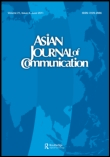
Asian Journal of Communication
Scope & Guideline
Bridging Cultures Through Innovative Research
Introduction
Aims and Scopes
- Intercultural Communication:
The journal emphasizes the study of communication across different cultures within Asia, examining how cultural nuances influence communication practices, media consumption, and intergroup relations. - Digital Media and Social Platforms:
There is a strong focus on the impact of digital media and social platforms on societal behavior, including issues like online activism, misinformation, and the role of social media in shaping public opinion. - Political Communication:
Research often explores the intersection of media and politics, analyzing how media narratives influence political engagement, public perception, and the dynamics of political discourse in various Asian societies. - Media and Identity:
The journal delves into how media representations shape individual and collective identities, particularly in the context of gender, ethnicity, and religion, reflecting the complexities of identity formation in contemporary Asia. - Crisis Communication:
The journal investigates communication strategies during crises, including public health emergencies and natural disasters, highlighting the role of media in shaping public response and governmental accountability. - Islamic Communication:
A distinctive area of focus includes the exploration of Islamic communication practices, particularly in Southeast Asia, examining how religious values influence media and communication strategies.
Trending and Emerging
- Social Media Activism:
There is a growing trend of research examining how social media platforms facilitate activism, particularly in the context of anti-racism and political participation, reflecting a heightened awareness of social justice issues. - Impact of AI and Algorithms:
The influence of artificial intelligence and algorithms on media consumption and public discourse is increasingly being studied, particularly regarding issues like bias, misinformation, and the creation of echo chambers. - Health Communication:
Research focusing on health communication, especially in the context of the COVID-19 pandemic, has surged, highlighting how media shapes public understanding and response to health crises. - Cultural Representation and Identity Politics:
Emerging studies are increasingly addressing how cultural representations in media affect identity politics, particularly concerning marginalized communities and religious minorities across Asia. - Environmental Communication:
With the growing urgency of climate change, there is an increasing focus on environmental communication strategies and how media narratives shape public perception and engagement with environmental issues. - Transnational Media Flows:
Research is increasingly exploring the implications of transnational media flows, particularly in relation to the Korean Wave and its impact on regional cultural consumption and identity.
Declining or Waning
- Traditional Media Studies:
Research on traditional media forms, such as print and broadcast journalism, has seen a decline as scholars increasingly focus on digital platforms and their transformative effects on communication practices. - Western-centric Communication Theories:
There has been a noticeable shift away from applying predominantly Western communication theories to Asian contexts, with a growing emphasis on developing indigenous theories that better reflect the unique cultural dynamics of the region. - Cultural Homogenization:
Discussions around cultural homogenization and its effects on local cultures have diminished, as the focus has shifted towards celebrating cultural diversity and the resilience of local identities in the face of globalization. - Media Economics:
The exploration of media economics and industry practices has waned, with less emphasis on traditional economic models and more focus on socio-cultural impacts of media consumption. - Media Literacy Initiatives:
While still relevant, the volume of research specifically addressing media literacy initiatives has decreased, potentially due to the increasing assumption of digital literacy among new generations.
Similar Journals
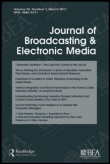
JOURNAL OF BROADCASTING & ELECTRONIC MEDIA
Transforming Understanding of Audience StudiesThe JOURNAL OF BROADCASTING & ELECTRONIC MEDIA, published by Routledge Journals, Taylor & Francis Ltd, is a premier academic publication in the field of communication, officially recognized in the Q1 category for its exceptional quality and impact. With a rich history dating back to 1985, this journal serves as a vital platform for innovative research and critical discussions surrounding broadcasting and electronic media, addressing contemporary issues in digital communication, media technology, and audience studies. The journal boasts an impressive Scopus rank of #73 out of 511 in the Social Sciences - Communication category, placing it within the top 15% of its field. Researchers, professionals, and students alike benefit from its insightful articles that contribute to understanding the evolving landscape of media and communication. Although it does not currently operate under an Open Access model, its rigorous peer-review process ensures that published works meet high academic standards, sustaining its reputation as a cornerstone for scholarly discourse in the media industry.
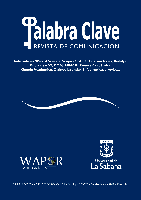
Palabra Clave
Championing Research that MattersPalabra Clave is a leading open-access journal published by the UNIV SABANA, FAC COMUNICACION in Colombia, dedicated to advancing the fields of Arts and Humanities as well as Communication. Since its inception in 2001, the journal has committed to providing a platform for innovative research and critical discourse, garnering an impressive Q2 classification in both respective fields. The journal is indexed in Scopus, with a commendable ranking of #26 out of 173 in Arts and Humanities, representing the 85th percentile, and #263 out of 511 in the Communication category, indicating its significant impact within the academic community. With its converged years from 2012 to 2024, Palabra Clave encourages scholars, professionals, and students to engage with contemporary issues through a lens of interdisciplinary scholarship. Accessible through its open-access model, this journal fosters the democratization of knowledge and aims to connect researchers across the globe.

Comunicacio-Revista de Recerca i d Analisi
Transforming Perspectives in Media StudiesComunicacio-Revista de Recerca i d Analisi, published by SOC CATALANA COMUNICACIO, serves as a leading platform in the field of communication studies, focusing on innovative research and critical analysis. With its Open Access policy established in 2010, the journal ensures that quality research is accessible to a broader audience, promoting the dissemination of knowledge in the realm of communication. The journal, which is characterized by its rigorous peer-review process, aims to explore various dimensions of communication, media, and cultural studies, thereby facilitating an interdisciplinary dialogue among researchers, professionals, and students. Housed in the vibrant city of Barcelona, Spain, this journal is poised to make a substantial impact in the academic community, offering a valuable resource for those seeking to stay abreast of the latest developments in the field.

Tripodos
Connecting Ideas, Sharing KnowledgeTripodos is a prominent open-access journal published by UNIV RAMON LLULL, FAC CIENCIES COMUNICACIO BLANQUERNA in Spain, dedicated to advancing the field of communication studies since its establishment. With an ISSN of 1138-3305 and an E-ISSN of 2340-5007, Tripodos has gained recognition for publishing high-quality research articles that examine diverse aspects of communication in contemporary society. The journal has successfully transitioned to open access since 2006, ensuring that its valuable contributions are readily available to a global audience. As of 2023, Tripodos holds a Q3 ranking in the Communication category according to Scopus, reflecting its growing influence within the academic community, ranking 187 out of 511 journals and positioning itself in the 63rd percentile. This journal serves as an essential platform for researchers, professionals, and students who are eager to explore the dynamic field of communication and its impact on society.
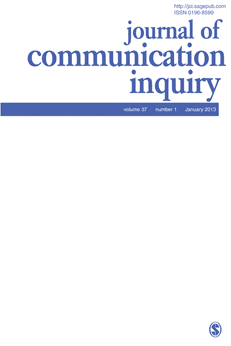
Journal of Communication Inquiry
Advancing Interdisciplinary Dialogue in Communication StudiesJournal of Communication Inquiry, published by SAGE PUBLICATIONS INC, is a premier interdisciplinary journal that serves as a vital platform for scholars and practitioners in the fields of communication, cultural studies, and the arts and humanities. With a rich history dating back to its inception in 1974, the journal has consistently upheld rigorous academic standards, reflected in its impressive rankings within the Q1 and Q2 quartiles across various disciplines according to the latest metrics. The journal's comprehensive scope encompasses theoretical and empirical research, catering to a diverse readership who are keen to explore contemporary communication issues and cultural dynamics. While the impact factor is not explicitly stated, the journal's Scopus ranks position it favorably within its categories, with notable percentiles that highlight its influence in the academic community. As an essential resource for researchers, professionals, and students alike, the Journal of Communication Inquiry invites contributions that advance the discourse surrounding communication practices and cultural phenomena, contributing to the ongoing dialogue in these evolving fields.

Media International Australia
Advancing Scholarly Dialogue in Media StudiesMedia International Australia is a leading journal that occupies a unique position at the intersection of communication and cultural studies. Published by SAGE Publications Ltd, this journal has established itself as a vital platform for scholarly discourse since its inception, now converging efforts from 2008 to 2024. With an impressive Q1 ranking in both the Communication and Cultural Studies categories, it ranks 12th out of 1304 in Cultural Studies and 42nd out of 511 in Communication, placing it within the 99th and 91st percentiles respectively according to Scopus metrics. The journal is committed to providing access to rigorous research that reflects contemporary issues in media, making it essential reading for researchers, professionals, and students keen on advancing their understanding of media's role in society. Despite not being fully Open Access, it ensures that quality research remains accessible through institutional subscriptions, allowing a broad audience to benefit from its insightful contributions.

Historia y Comunicacion Social
Fostering Innovative Dialogues Through Time.Historia y Comunicación Social is a distinguished academic journal published by UNIVERSIDAD COMPLUTENSE MADRID, SERVICIO PUBLICACIONES, dedicated to the interdisciplinary exploration of history and communication. With a notable impact factor reflected in its impressive rankings across various categories—Q1 in History and Q2 in Communication and Sociology/Political Science—this journal stands out as a critical resource for scholars and practitioners alike. Established as an Open Access platform since 1996, it has broadened accessibility to research, fostering innovative discussions and insights from the historical and communicative realms. Spanning from 2010 to 2024, the journal encourages contributions that challenge conventional narratives and offer fresh perspectives. With its significant recognition in Scopus rankings, inclusive of a remarkable 88th percentile in Arts and Humanities History, Historia y Comunicación Social serves as a vital hub for those seeking to deepen their understanding of the complex interplay between history and communication.
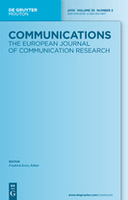
Communications-European Journal of Communication Research
Illuminating Insights in Communication PracticesCommunications-European Journal of Communication Research is a premier journal published by DE GRUYTER MOUTON, dedicated to fostering scholarly discourse in the field of communication studies. With a publication history spanning over four decades, from 1976 through to 2024, this journal serves as a vital resource for researchers and practitioners interested in the latest advancements and theoretical developments in communication. The journal is recognized for its rigorous peer-review process and has earned a commendable reputation, evidenced by its ranking in the Q2 quartile in both Arts and Humanities (miscellaneous) and Communication categories for 2023. Its Scopus rankings signify its relevance and impact, positioning it within the top quartile of the discipline's literature. Although not an open access journal, it provides access to a wide range of research that contributes significantly to the understanding of communication practices across diverse contexts. Scholars, professionals, and students alike will find a wealth of knowledge that not only sharpens their academic pursuits but also enriches practical applications in the communication landscape.

Revista Comunicacao Midiatica
Advancing Research in Communication StudiesRevista Comunicação Midiática is a prominent academic journal focusing on the fields of communication, media studies, and cultural dynamics, published by Universidade Estadual Paulista Júlio Mesquita Filho, Facility of Architecture, Arts & Communication. With its ISSN 2236-8000, this journal aims to disseminate innovative research, theoretical advancements, and practical insights that contribute to a deeper understanding of communication processes in contemporary society. Although it currently does not provide Open Access options, the journal serves as a valuable resource for researchers, professionals, and students who are keen to explore the intricate relationships between media and culture. Located in Bauru, Brazil, the journal is committed to fostering multidisciplinary dialogue and enhancing scholarly discourse, making it an invaluable addition to the academic landscape in the realm of media studies.
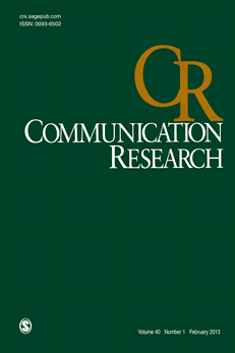
COMMUNICATION RESEARCH
Navigating the Complexities of Human Communication.COMMUNICATION RESEARCH, published by SAGE Publications Inc, stands as a premier journal in the fields of Communication and Linguistics, boasting an impressive impact factor that reflects its influential contributions to academic scholarship. Since its inception in 1974, this esteemed journal has provided rigorous, peer-reviewed research that delves into the dynamics of human communication, making it a vital resource for researchers, practitioners, and students alike. With a commendable ranking within the Q1 category for both Communication and Linguistics and consistently placed within the 99th percentile across Scopus ranks, COMMUNICATION RESEARCH is at the forefront of academic inquiry, fostering a deeper understanding of communication processes in diverse contexts. While not an Open Access journal, it offers extensive access options facilitating widespread dissemination of knowledge. Researchers can look forward to an engaging array of cutting-edge studies and theoretical advancements in forthcoming issues, making it an indispensable tool for those studying the complexities of language and communication.